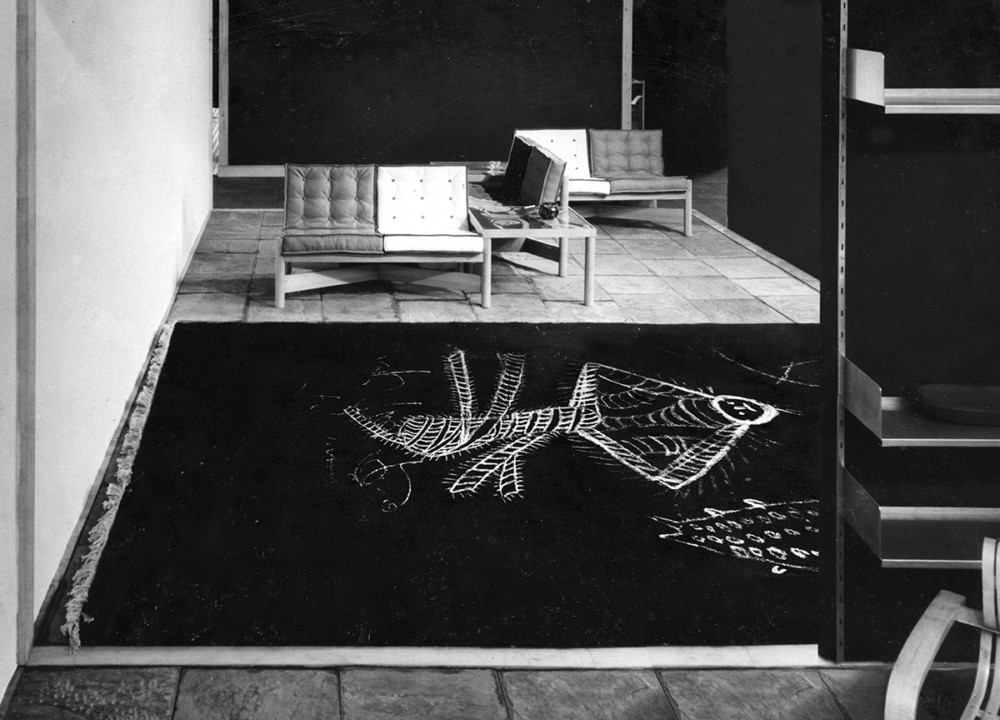1940年代・シャルロット・ペリアンの絨毯
1941年に高島屋で開催され、後の日本のデザイン発展に大きな影響を与えた、フランス人建築家・デザイナーのシャルロット・ペリアンによる展覧会『選擇・傳統・創造』。
同展覧会に、ペリアンのデザインによる「⽔夫のデッサンを模様に施した絨毯」「唐の⽂字を記した朱⾊の絨毯」の2点を製作納入、展示の機会をいただきました。
1940年、ル・コルビュジエのアトリエで同僚だった建築家・坂倉準三の推薦により、商工省の工芸指導顧問として初来日したシャルロット・ペリアン。
海外輸出を見越した工芸品の改良・指導を一任され、若き日の柳宗理と共に日本全国をまわる中、1940年11⽉5⽇、⼭形県をはじめて訪問したその⽇の午後、私たちの当時の⼯房をご視察いただきました。
視察からのご縁が繋がり、翌年に⾼島屋で開催された当該展覧会『選擇・傳統・創造』では、2点の手織緞通を、当時の社名であった「東北振興ニッポン絨毯株式会社」として製作する機会を頂戴しました。
写真に映された「⽔夫のデッサンを模様に施した絨毯」の原画となったのは、第二次世界大戦最中の1940年、ドイツ軍がパリを陥落した翌日に日本へと発ったペリアンが乗り合わせた汽船「白山丸」の甲板に、水兵がチョークで描いたデッサンです。
当時この「白山丸」には、戦火を避けて日本へと帰国するパリの画壇で活躍していた芸術家たち、岡本太郎や猪熊弦一郎、荻須高徳らの姿があったといいます。
手織緞通という極めて工芸的なものづくりに対して、その表出するデザインに、落書きにも近い、意図せず生まれた愉快な図柄を施すという点に、ペリアンの自由な発想と眼差し、鋭い批評精神を感じます。
日本のデザイン黎明期における貴重な資料、モダンデザインとの交信の記録が、私たちはもとより、この山形の山辺の地で紡がれていることを大変嬉しく光栄に思います。
photograph by Francis Haar, 1941
© ADAGP, Paris & JASPAR, Tokyo 2022 E4817
2023.11.21





